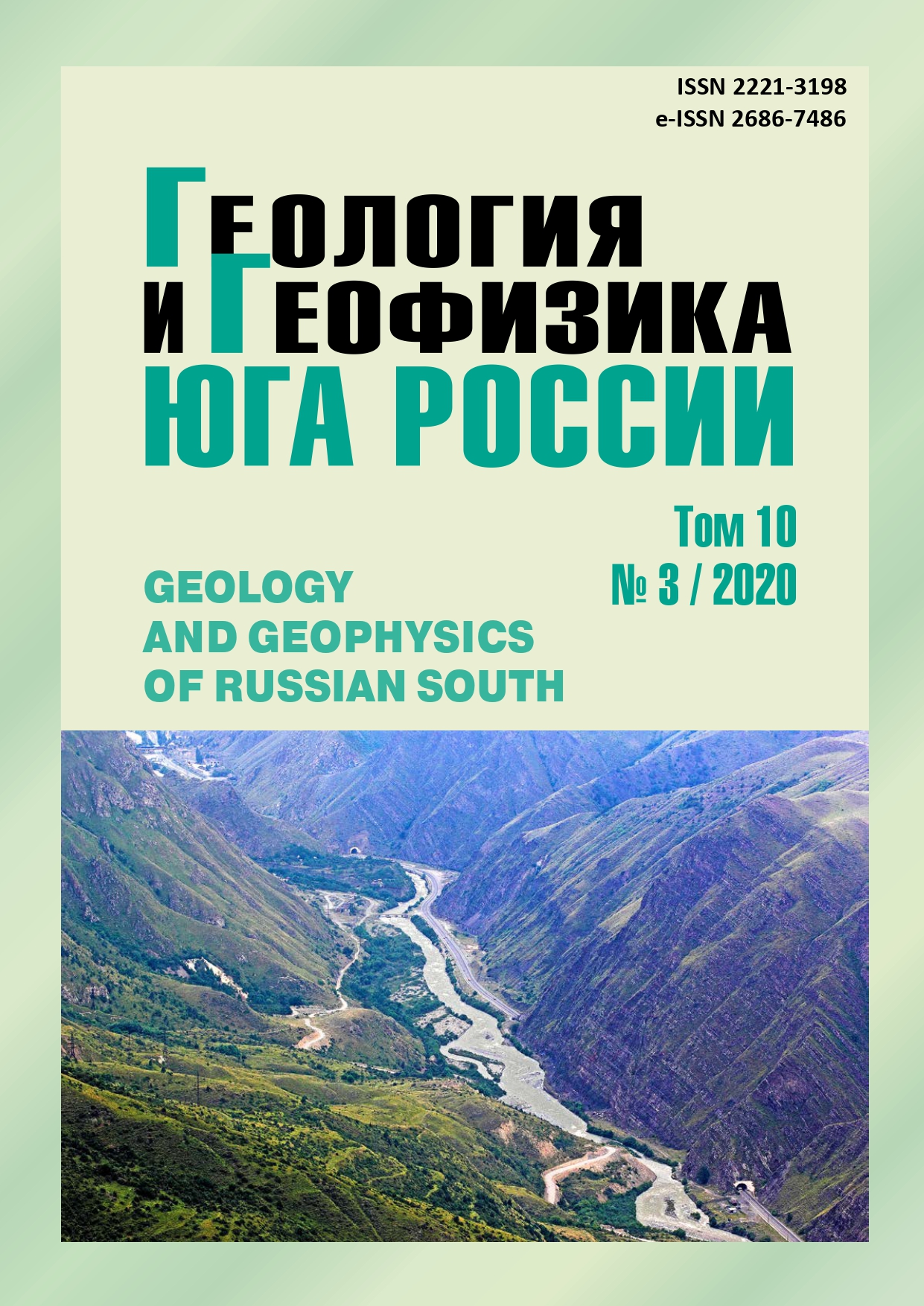Early Paleozoic gabbroids of the Arkhyz intrusive complex (North Caucasus): geodynamic typification and mineralogy
Abstract
Relevance. The Mesozoic and Early Paleozoic allochthonousophiolite complexes, confined to different structural and formation zones are known in the Greater Caucasus. The study of rocks composing ophiolite sections is carried out in various regions of the globe However, geochemical studies based on an analysis of the distribution of rare and rare-earth elements are still insufficient and, first of all, this concerns the Early Paleozoic formations of the North Caucasus region. The aim of the study is to obtain (quantitative) analytical data and decipher the geodynamic processes that took place in the Early Paleozoic. The Middle Ordovician gabbroids of the Arkhyz complex, which were distributed within the Marukhophiolite cover in the structural and formation zone of the Front Range of the Greater Caucasus, were chosen as the object of research. Research methods included: petrographic description of rocks, quantitative analyzes by RFA, ICP-MS; calculations of geochemical characteristics; analysis of discriminatory charts; comparing the values of the average contents of elements with their content in rocks (standards) of a close petrochemical type from various geodynamic settings. Results. As a result of the study, it was found that gabbroids are high alumina, low titanium, moderately magnesian, low potassium rocks with a sodium type of alkalinity. It is assumed that they are derivatives of the melt formed during the melting of depleted spinel peridotites. The positive europium anomalies Eu / Eu * = 1.27‑2.65, and Sr allow the initial accumulation of plagioclase in the initial melt. Incompatible elements and REE normalized to N-MORB and chondrite form line spectra close to N-MORB, but in general, with significantly lower concentrations of most elements. Σ REE in gabbro = 10.5‑21.5 g / t. The following are noted: a slight increase in the contents of hydromagmatophilic, coarse-ionic elements Rb, Ba, K, Sr and negative anomalies of highly charged elements Nb, P, Zr, Hf. The analysis of petrogenetic diagrams showed that the figurative points of gabbroids are grouped in the fields of island-arc tholeiites. Their comparison with the rocks of close petro-geochemical types shows that they are most comparable with the rocks of young island arcs. The mineralization associated with gabroids is subdivided into the formation of the magmatic stage – titanium-magnetite and magnetite ore concentrations and the post-magmatic stage – carbonate veins with pyrite and chalcopyrite. Based on the totality of the results obtained, it is assumed that the allochthonous structure, known as the “Marukh Veil” of the Front Ridge, is not a classical ophiolite association, but is formed as a result of a series of overthrusts in which the lithospheric mantle and young island arc formations.


